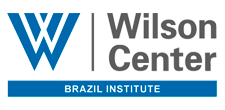Collaboration promotes excellence in international research
At the opening session of FAPESP Week, directors from the City University of New York (CUNY) and FAPESP emphasize the importance of partnerships between scientists from different countries in developing science and technology
 By Heitor Shimizu, in New York | Agência FAPESP – "Those who work in developing international collaboration are very familiar with the experience I’ve had many times; that of traveling, holding very interesting conversations with people from different fields, talking about great ideas for partnerships and then seeing nothing come of it," said Chase F. Robinson, president of the Graduate Center of the City University of New York (CUNY) at the opening session of FAPESP Week New York.
By Heitor Shimizu, in New York | Agência FAPESP – "Those who work in developing international collaboration are very familiar with the experience I’ve had many times; that of traveling, holding very interesting conversations with people from different fields, talking about great ideas for partnerships and then seeing nothing come of it," said Chase F. Robinson, president of the Graduate Center of the City University of New York (CUNY) at the opening session of FAPESP Week New York.
"But this symposium [FAPESP Week] is an example showing us that it doesn’t always have to be this way. First of all, it is an event that has been organized in record time, with remarkable efficiency, based on a recent visit I made to FAPESP where I met with Carlos Henrique de Brito Cruz [scientific director of FAPESP]. Secondly, it is an event that will allow us to promote what we do, and share our findings with scientists from São Paulo," he said.
"It’s also an important event for opening avenues to scientific cooperation, and it represents an initial demonstration of the successful collaboration between CUNY and FAPESP. It is certainly the beginning of what may be an extraordinary partnership," Robinson said.
Organized by FAPESP, CUNY and the Wilson Center, FAPESP Week New York, held November 26-28, 2018 at the Graduate Center da CUNY, aims at strengthening the links and promoting research partnerships between researchers from Brazil and the United States.
"FAPESP Week is also a part of the FAPESP strategy for promoting international collaboration. With partners in other countries, we sponsor two or three of these events every year for the purpose of bringing together researchers from institutions in those countries with researchers from the state of São Paulo so that they can identify themes of mutual interest and engage in future research collaboration," said Marco Antonio Zago (photo), FAPESP president.
Zago then talked about science and technology in the state of São Paulo, which "although it occupies only 3% of Brazil, generates nearly half of the country’s science."
"But we would also like to emphasize the fact that what distinguishes the state of São Paulo is not just the size of its system of science, technology and innovation (ST&I), but the quality. I’ll give you two examples. The first is the significant share of companies and the private sector involved in the state’s ST&I, in terms of both the size of the investment as well as in the number of researchers," Zago said.
"The second point is its continuity. Despite the economic difficulties of recent years that have resulted in significant cuts in federal investments in R&D, research investments made through FAPESP are protected by law and the constitution of the state of São Paulo," he said.
"That continuity ensures the quality of research generated in São Paulo, but it is important that we do more, and we have several strategies towards this end. One important tool for this is international collaboration. At FAPESP, we promote this collaboration in several ways. One is by having researchers from the state of São Paulo spend short periods of time at laboratories abroad with which they are collaborating. Another example is attracting researchers, especially young people, from abroad to conduct research or set up research laboratories at institutions in the state of São Paulo," said Zago.
São Paulo and FAPESP
Carlos Henrique de Brito Cruz, FAPESP scientific director, also highlighted the importance of international research collaboration, mentioning that FAPESP has cooperation agreements with more than 200 organizations in 28 countries. In 2017, the Foundation invested R$ 175 million to promote scientific collaboration between researchers from institutions in São Paulo and research networks in Brazil and abroad.
According to Brito Cruz, the goal is to optimize the results of scientific studies in areas of mutual or complementary interests and expand the international impact of science generated in the state of São Paulo. FAPESP invested R$ 27.2 million on collaboration in Brazil and R$ 147.8 million on international collaboration.
"We have a strategy at FAPESP for developing collaboration activities for researchers from the state of São Paulo and that is one of the reasons we’re here at FAPESP Week. Most of the world’s important science and technology institutions are linked to the state of São Paulo through FAPESP. Cooperation agreements that we have signed with these institutions enable researchers from the state of São Paulo to submit proposals together with colleagues from other countries that will be evaluated, and if approved, funded by FAPESP and the partner institution," he said.
According to Brito Cruz, in addition to awarding scholarships and grants for researchers and students from the state of São Paulo to go abroad, FAPESP has several mechanisms to encourage researchers and students from other countries to come to the state of São Paulo. Researchers from 167 countries traveled to São Paulo in 2017 on grants awarded by FAPESP.
Brito Cruz also talked about the São Paulo School of Advanced Science (SPSAS) program, which offers short-term courses given by renowned Brazilian and foreign scientists, and the São Paulo Excellence Chair (SPEC) Program, in which senior-level researchers from other countries collaborate with their Brazilian colleagues for periods of three to five years, involving 12-week stints in Brazil each year.
"Our goal is to make the state of São Paulo an internationally recognized research hub. To FAPESP, collaboration does not mean exporting Brazilians, but instead is the desire for collaborative research projects. Collaboration is having Brazilians and their colleagues from abroad working together to develop and conduct research studies. But it is important to underscore the fact that we want complete research studies that are complex and justify international collaboration," said Brito Cruz.
CUNY
Stephen Brier, professor in the PhD program in Urban Education and coordinator of the Interactive Technology and Pedagogy doctoral program of the Graduate Center, talked about CUNY and its role in developing university level public education in the United States.
CUNY is the largest urban public university in the world, made up of 25 campuses distributed throughout the five New York boroughs: Manhattan, Brooklyn, Queens, the Bronx and Staten Island. The university serves more than 275,000 students among its 25 institutions, including 11 senior colleges, seven community colleges and the CUNY Graduate Center. CUNY has over 100 research centers and a 2018 budget of US$1.6 billion.
Founded in 1847, CUNY has among its alumni 13 Nobel laureates and 23 winners of MacArthur Foundation Genius Grants. Among CUNY graduates are Jonas Salk (inventor of the first polio vaccine), Kenneth Arrow (winner of the 1972 Nobel Prize in Economic Sciences), John O'Keefe (winner of the 2014 Nobel Prize in Medicine), Leonard Kleinrock (one of the inventors of the Internet), Andy Grove (founder of Intel), Colin Powell (former U.S. secretary of state), Jerry Seinfeld (comedian) and Mario Puzo (writer).
"At CUNY, we have the third largest system of university level public education in the United States, and we’re proud to be a system open to people; to anyone, not just the chosen few," Brier said.
Brier went on to say that CUNY is one of the most diverse and inclusive universities in the United States, and is among the top 10 institutions in terms of minority group participation in graduate programs.
Seven out of every ten CUNY students receive some form of financial aid. The result is that, unlike most college students in the United States, 80% of those who complete their undergraduate degrees at CUNY do so without accumulating any student debt.
The Graduate Center of CUNY is located in the heart of Manhattan – on Fifth Avenue, between 34th and 35th Streets – and works in cooperation with the other CUNY campuses.
With a budget of US$ 140.6 million for fiscal year 2018-2019, the Graduate Center has a core faculty of nearly 140 professors and more than 1,700 faculty that give classes or engage in other activities associated with the other CUNY campuses. The Center offers graduate education, with incentives such as fellowships and research opportunities.
The Center has 4,000 students enrolled in 40 doctoral and master’s programs – 90% of whom are pursuing PhDs. Courses are offered at several institutes and centers, including the Advanced Science Research Center (ASRC). The ASRC operates in five interconnected research initiatives: Environmental Sciences, Nanoscience, Neuroscience, Photonics and Structural Biology. Researchers work on collaborative projects, which include visiting scientists and students, and share equipment and laboratory infrastructure.
The CUNY Graduate Center has various centers for education and research in fields and themes considered representative of minorities, such as the Center for Latin American, Caribbean and Latino Studies, the Center for the Study of Women and Society, the Center for LGBTQ Studies and the Stone Center on Socio-Economic Inequality.
FAPESP Week New York brings together scientists from several fields of knowledge who will make presentations on the following themes: Metropolitan and Environmental Issues, Social Inequality, Neuroscience, Structural Biology, Photonics, Astronomy and Astrophysics and Fake News and Social Media in Political Campaigns in the United States and Brazil.





